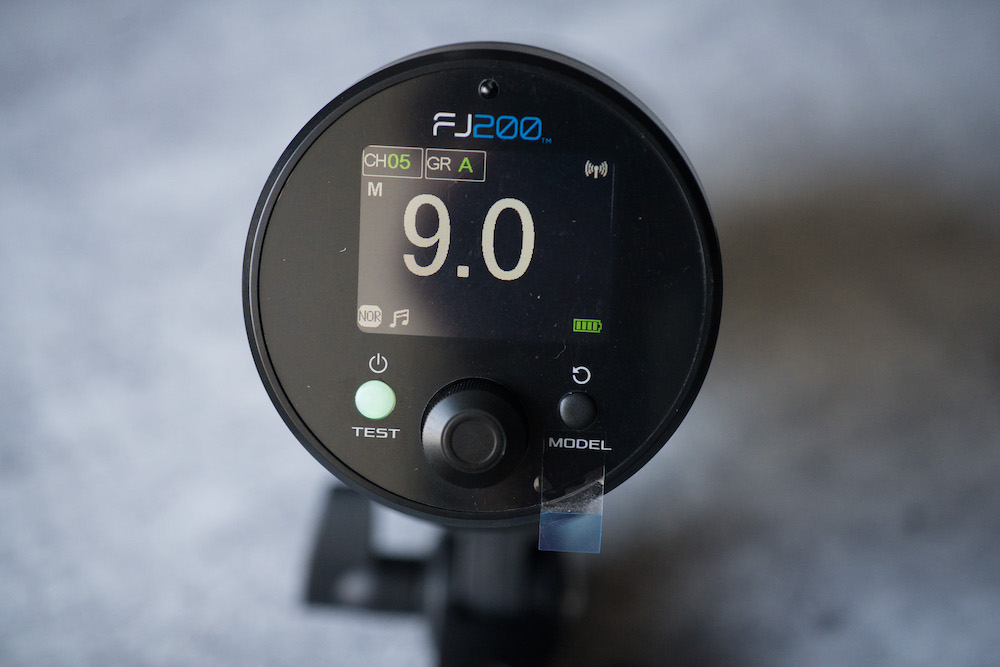At Flashpoint, we’re dedicated to making great products. To make sure we always deliver the best solutions, it’s important to stay competitive with new products entering the market. We trust in the dependability that our system can offer creators, and that’s why we’re happy to put it to the test when new products are introduced. This is why we asked Rob Hall to review the full lineup of new Westcott FJ lights and see how they measure up to the Flashpoint R2 system.
To continue with my comparison of the Westcott FJ vs. Flashpoint R2 series, we’re going to dive into the Flashpoint eVOLV 200 Pro vs. Westcott FJ200. The Flashpoint eVOLV 200 Pro and predecessor, the eVOLV 200, are possibly the most popular flash units on the market. It’s unique modularity and balance of size and power have led to competition from multiple brands. Let’s take a look at how it matches against the Westcott FJ200.

Size
The Westcott FJ200 weighs 1.74 lb, whereas the Flashpoint eVOLV 200 Pro weighs just over 2 lbs. The FJ200 has a larger, circular body whereas the eVOLV has a shorter, rectangular body. I find this makes the comparison difficult. Despite being lighter, the FJ200 takes up considerably more space inside a camera bag. You can expect a single, covered FJ200 to fill the space of a typical 70-200mm F/2.8 slot. The eVOLV 200 Pro, however, can stack two units in the same spot.
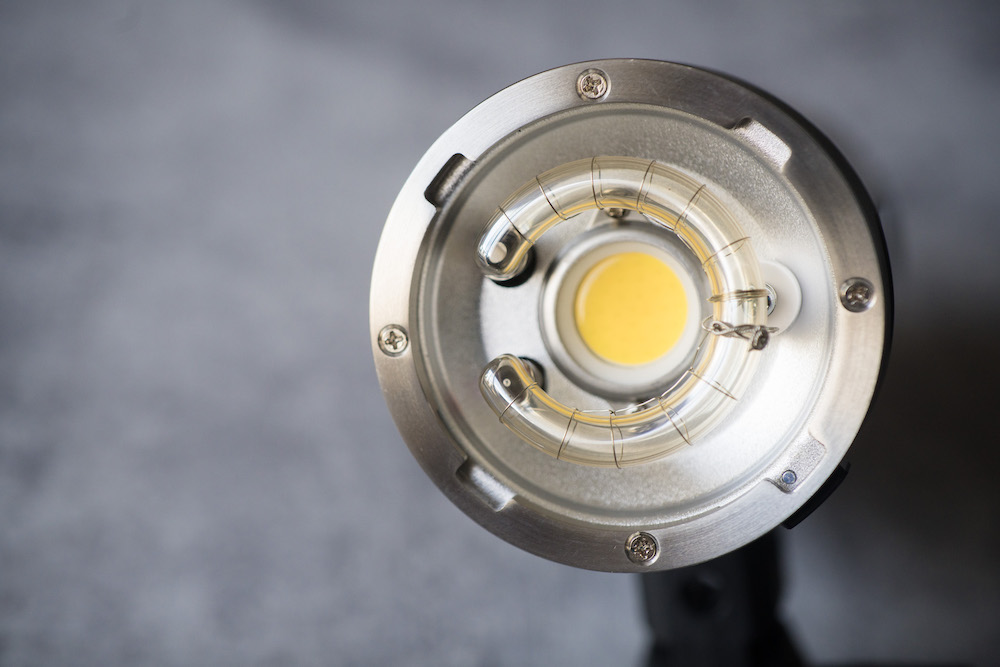
Design
To further complicate matters, these strobes have a very different design. The FJ200 is a bare bulb unit. The eVOLV 200 Pro ships with two heads, a bare bulb, and a fixed focal-length fresnel head (also known as a speed light head). There is also an additional round head available for the eVOLV 200 Pro compatible with compact magnetic modifiers. The FJ200 does offer similar modifiers by way of reflector and snoot attachments, but they are less compact. The eVOLV 200 Pro’s dual head system is so popular because, while the bare bulb and round head are proprietary, the fresnel head is compatible with anything designed for on-camera speed lights — like Magmod and Flashbenders.
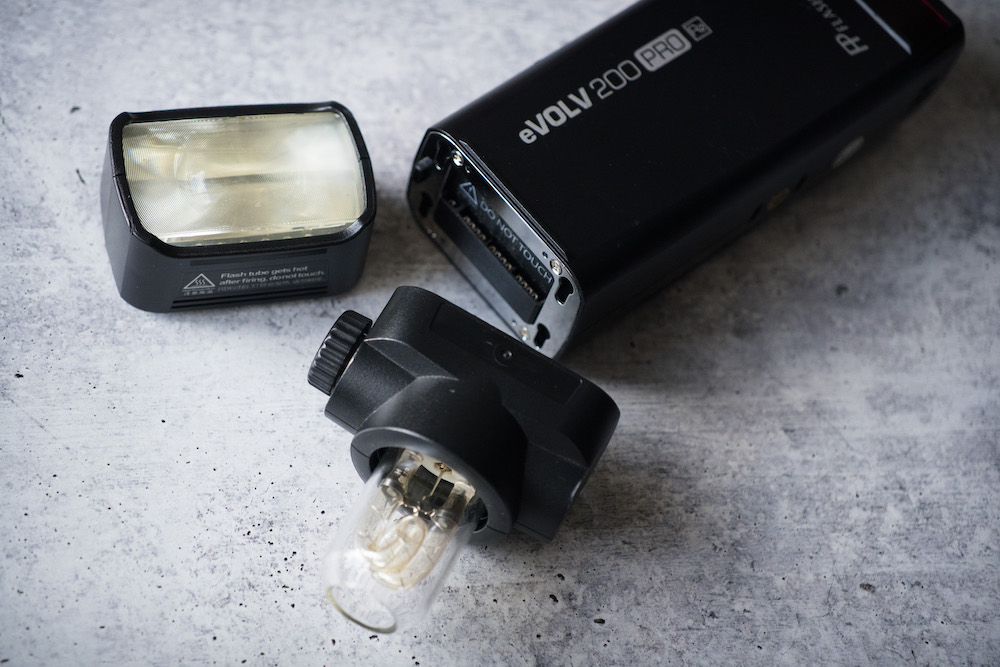
Tech Specs
Now let’s jump into flash specs. Here is all the information I captured testing the lights using the Sekonic L858d-U light meter and C-800 Colorimeter.
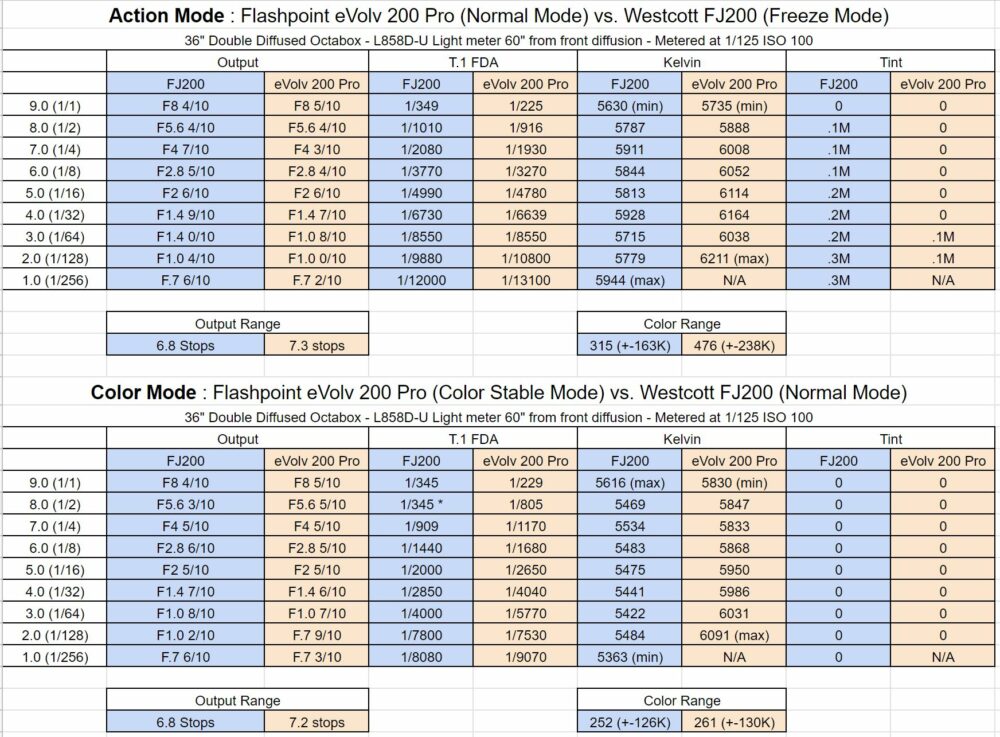
Output
When comparing the bare bulb from both lights in the same modifier, both strobes produce a near-identical output, with the eVOLV 200 Pro producing only 1/10th stop of light more than the FJ200. The fresnel head of the eVolv 200 Pro would be an even greater difference. However, it’s not an equivalent comparison considering the light would have more narrow coverage.
Output Stability
Output stability refers to how accurately a strobe’s output correlates to its power level. The eVOLV 200 Pro has slightly better output stability, as the FJ200 has about ½ stop less output range between it’s minimum and maximum settings. Both strobes experience some inconsistencies in their freeze modes, such as the FJ200 only losing .7 stops of output between ½ and ¼ power. The eVOLV has a similar inconsistency of .8 stops between ⅛ and 1/16th power.
Color
One point the Westcott heavily markets is the “unrivaled color consistency at every power level.” In my testing, both strobes offered near-identical color stability, with the FJ200 having a total drift of 252 Kelvin in its color stable mode, and the eVOLV 200 Pro having 261. Despite this similarity, I still consider the Westcott better at color because it’s Kelvin temp is much closer to the 5500K that flash photographers expect out of their strobes. The minimum Kelvin temp that the eVOLV 200 Pro produced was 5830K, and it went as high as 6091 in my testing.
In their action freezing modes, the eVOLV 200 experiences more Kelvin shift than the FJ200 but the FJ200 has a more persistent green tint across the entire power range.
T.1 Flash Durations
Flash durations are most important when it comes to freezing action. The FJ200 and eVOLV 200 are neck and neck in this space. In their action-freezing modes, the FJ200 starts out with an edge at full power, but the gap quickly closes. At 1/64 power, the eVOLV 200 surpasses the FJ200 with shorter durations and ends on top at minimum power. For real world use, the differences are so slim that you would not be able to notice.
Battery
The Flashpoint eVOLV 200 Pro offers about 10% more full power flashes over the FJ200 (500 vs. 450). Westcott offers an AC power adapter to constantly power the light, whereas no such accessory exists for the eVOLV 200 Pro.
Recycle Time
The Westcott is impressive when it comes to recycle speed, as it recycles a full power flash in 1.3 seconds, whereas the eVOLV 200 Pro takes 1.8. This is likely a product of the larger and more spacious design giving more room for hot air to exit the body.
Function
Apart from the head modularity mentioned earlier, there is no significant difference in function of these lights. Both have TTL, HSS, Stroboscopic, and Manual control — all from a wireless remote.
Finer Points
The FJ200 has a color display with more contrast than the eVOLV 200.
The stand attachment for the FJ200 is stronger than the eVOLV 200 Pro. However, most photographers using larger modifiers for the eVOLV use the popular S-bracket anyway.
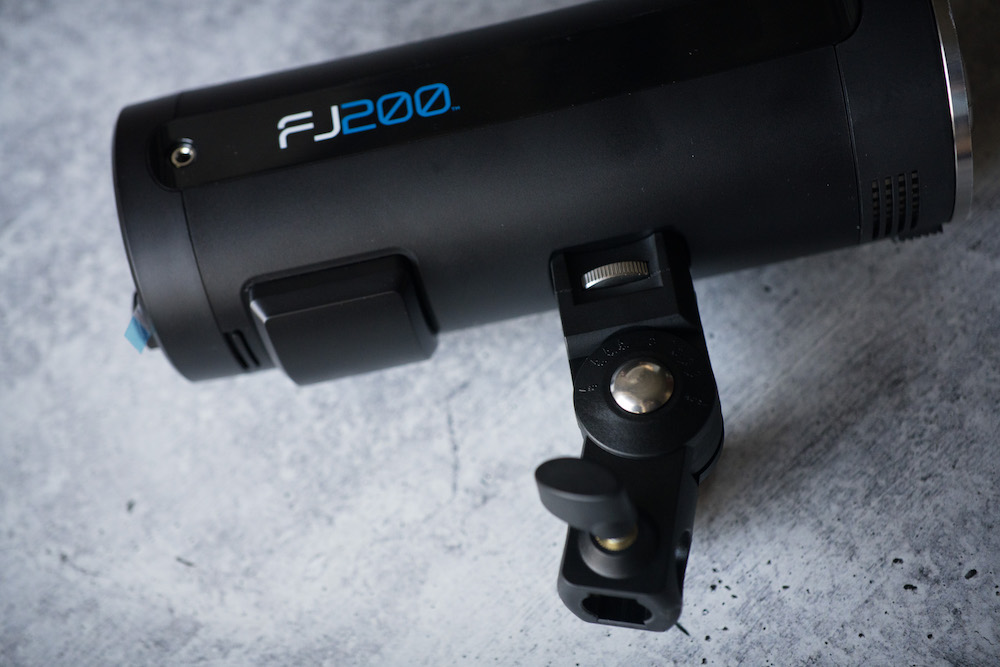
Both strobes’ bare bulbs are proprietary and offer limited modifier selection. But both can fit in an S2 bracket which makes them compatible with any Bowens mount modifier.
The eVOLV 200 Pro has an optional EC-200 extension head for putting the body of the light lower on a light stand, or attaching to an assistant’s belt.
The eVOLV 200 Pro has an optional dual head adapter, allowing you to combine two eVOLVs and barebulbs onto a single Bowens mount — effectively creating a 400 w/s strobe.
Value
The eVOLV 200 Pro with two standard heads comes in at $349, and the FJ200 costs $399. Like the FJ400 and Xplor 400 Pro, these two are extremely close in price and performance — making their value highly dependent on the user.
Conclusion
The eVOLV 200 Pro is, in my opinion, the best strobe ever made. The multiple heads create compatibility with a majority of light shapers on the market. The power for its compact and easy-to-pack size makes it applicable to portrait, wedding, still life, and even some commercial photographers. While the FJ200 is a worthy competitor, and even boasts some advantages like faster recycle time and better color performance, none of that matches the modularity of the eVOLV 200 Pro.
Article and Photos by Robert Hall

